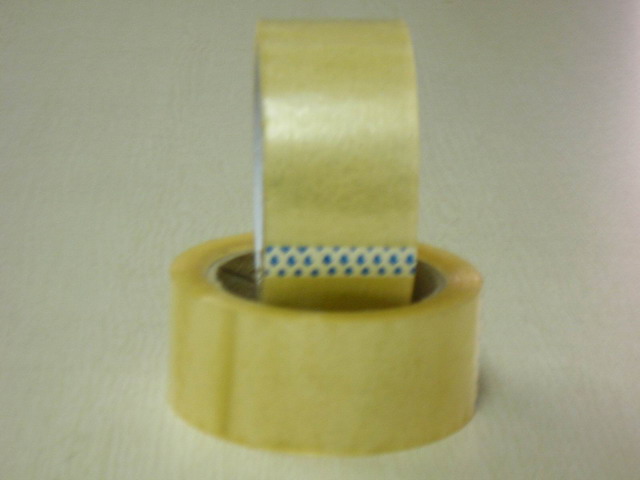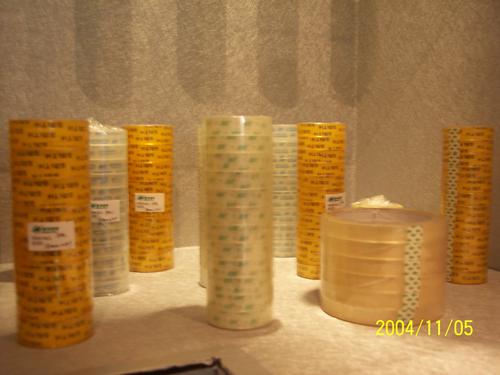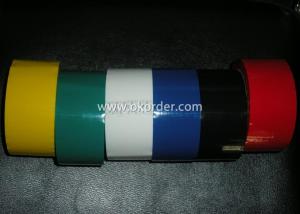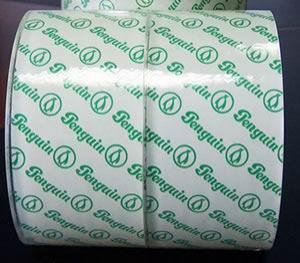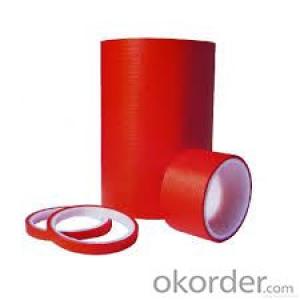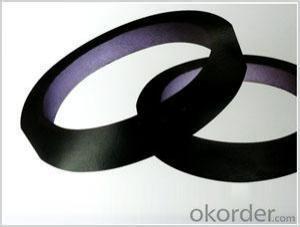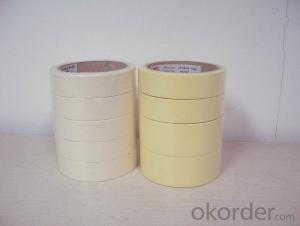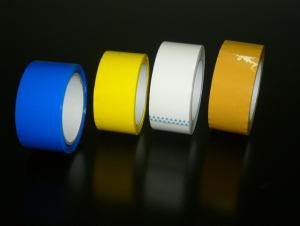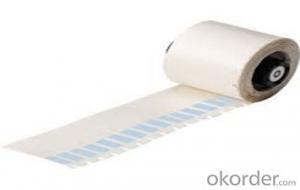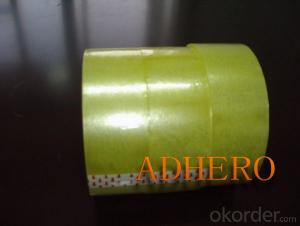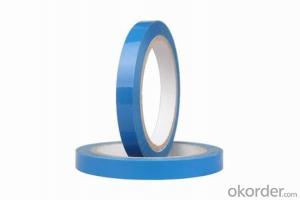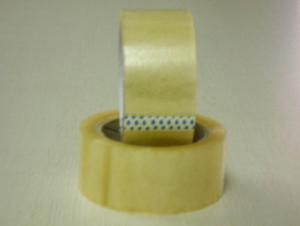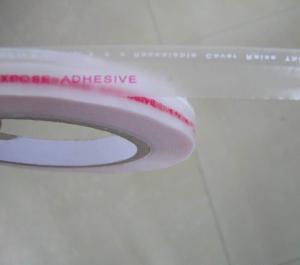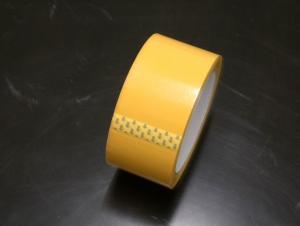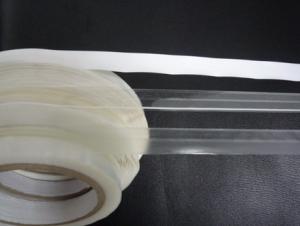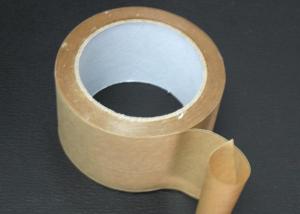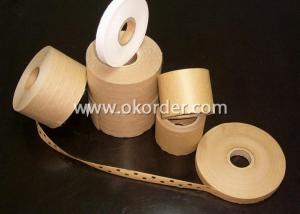Auspost Packaging Tape - BOPP Adhesive Packing Tape for Sealing Cartons
- Loading Port:
- China Main Port
- Payment Terms:
- TT OR LC
- Min Order Qty:
- -
- Supply Capability:
- -
OKorder Service Pledge
OKorder Financial Service
You Might Also Like
Product Description:
Quick details:
· Material: BOPP
· Use: Carton Sealing
· Adhesive Side: Single Sided
· Adhesive: Acrylic
· Adhesive Type: Water Activated
· Design Printing: Offer Printing
· Place of Origin: China (Mainland)
· color: clear, super clear, crystal clear, red, blue, brown, yellow, green etc
Specifications:
ItemNo. | Carrier | Adhesive | Total | Initial | Peel Adhesion | Holding | Tensile | Elongation |
BP-40 | BOPP film | water based acrylic | 40 micron | >18# | 0.5kgf/25mm | >24h | >30N/cm | <180% |
BP-45 | BOPP film | water based acrylic | 45 micron | >18# | 0.5kgf/25mm | >24h | >30N/cm | <180% |
BP-50 | BOPP film | water based acrylic | 50 micron | >20# | 0.5kgf/25mm | >24h | >30N/cm | <180% |
BP-65 | BOPP film | water based acrylic | 65 micron | >24# | 7.88N/25mm | >40h | >30N/cm | <180% |
Application:
Bopp tape is mainly for Carton sealing & packing, Light duty packaging, bundling, holding, and other office & household use.
Packing:
Paper Core ID: 76mm
Jumbo size: 1280mm x 4000m; 1625mm x 4000m
Cut roll size: As per customer's requirement
Cut rolls: 6 rolls per shrink, 36/54/72 rolls per carton with or without pallet
Jumbo rolls & log rolls: Packed with kraft paper and stretch wrap film, with or without pallet
- Q: What is the difference between acrylic and hot melt adhesive for packaging tape?
- Packaging tape commonly utilizes two types of adhesives: acrylic and hot melt. These adhesives possess distinct characteristics that set them apart. A significant disparity lies in their bonding strength. Hot melt adhesive boasts exceptional bonding strength, making it ideal for heavy-duty applications. It creates a robust and durable bond that can withstand rigorous handling and varying temperatures. Conversely, acrylic adhesive typically offers a lower level of bonding strength in comparison. While still suitable for most general packaging requirements, it may not be the best choice for heavy or bulky items. Another distinction can be found in the application process. Hot melt adhesive is applied in a molten state and solidifies once cooled. Typically, it is dispensed using a hot melt glue gun or applicator. The quick setting time of hot melt adhesive allows for swift packaging operations, making it popular in high-volume settings. On the other hand, acrylic adhesive is applied in a liquid form and requires some time to cure and establish a strong bond. It can be applied using a hand dispenser or tape gun, and optimal adhesion often necessitates some pressure. Moreover, hot melt adhesive demonstrates excellent adhesion to a wide array of surfaces, including cardboard, plastics, and metals. Its versatility allows for usage with various packaging materials. While acrylic adhesive also adheres well to different surfaces, it may not exhibit the same level of compatibility with certain low-energy surfaces, such as polyethylene or polypropylene. Furthermore, temperature resistance is an essential factor to consider. Hot melt adhesive performs admirably in both high and low temperatures, maintaining its bonding strength. It can endure freezing temperatures and heat without compromising its adhesive properties. Acrylic adhesive, while generally offering good temperature resistance, may not be as effective in extreme conditions, particularly at very high or low temperatures. In conclusion, the primary disparities between acrylic and hot melt adhesives for packaging tape lie in bonding strength, the application process, surface compatibility, and temperature resistance. While hot melt adhesive provides superior bonding strength, rapid setting time, and excellent temperature resistance, acrylic adhesive offers versatility, ease of application, and good adhesion to most surfaces. The choice between the two depends on specific packaging needs, materials used, and environmental conditions.
- Q: Are there any special considerations when using packaging tape for fragile items?
- Yes, there are special considerations when using packaging tape for fragile items. It is recommended to use a high-quality and strong packaging tape specifically designed for fragile items. Additionally, it is important to apply multiple layers of tape to ensure secure and stable packaging. Bubble wrap or foam padding should also be used to provide extra protection and cushioning. Proper labeling indicating the fragile nature of the package is also crucial to alert handlers to exercise caution during handling and transportation.
- Q: Does packaging tape come in different thicknesses for added durability?
- Yes, packaging tape does come in different thicknesses for added durability. The thickness of packaging tape is measured in mils, which refers to the thickness of the tape in thousandths of an inch. Common thicknesses for packaging tape range from 1.6 mils to 3.1 mils. Thicker tape is generally more durable and able to withstand heavy-duty applications. Thicker tapes are ideal for securing large or heavy packages, as they offer greater strength and tear resistance. Thinner tapes, on the other hand, may be suitable for lighter items or less demanding packaging needs. Thus, the availability of different thicknesses in packaging tape allows users to choose the most appropriate tape for their specific durability requirements.
- Q: Is packaging tape resistant to extreme temperatures or weather conditions?
- Yes, packaging tape is designed to be resistant to extreme temperatures and weather conditions. It is typically made with durable materials that can withstand both hot and cold temperatures, as well as protect packages from moisture, rain, and other weather elements.
- Q: For the moment the yellow rubber stamp [] how to use paper and pen, pen parts packaging tape?
- Circle, circle, lap, wrap the tail and cut off the excess!
- Q: Can packaging tape be used for sealing packages with perishable food items?
- Using packaging tape to seal packages containing perishable food items is not advisable. Perishable food items necessitate appropriate packaging materials that can establish seals resistant to air and moisture, thereby preserving their freshness and preventing contamination. Packaging tape is not specifically designed for this purpose and may not be capable of offering the required level of protection. It is highly recommended to employ specialized food-grade packaging materials such as plastic wrap, vacuum-sealed bags, or resealable containers to guarantee the safety and quality of perishable food items during transportation.
- Q: Are there any eco-friendly options for packaging tape?
- In today's market, there are various eco-friendly options for packaging tape. Typically, traditional packaging tapes are made from plastic materials like polypropylene or PVC, which are harmful to the environment and not biodegradable. However, there have been developments in creating eco-friendly alternatives to tackle this issue. Some of these options include: 1. Packaging tape made from paper: These tapes are crafted from renewable resources like paper and natural adhesives. They are both biodegradable and compostable, making them a sustainable choice for packaging requirements. 2. Gummed paper tape, also known as water-activated tape: This type of tape is made from paper and requires water to activate the adhesive. It forms a strong bond when applied to boxes and provides tamper-proof sealing. Additionally, water-activated tape is biodegradable and can be recycled along with the packaging it is used on. 3. Biodegradable and compostable tape: These tapes are manufactured using plant-based materials such as cellulose or polylactic acid (PLA). They are designed to naturally break down over time, minimizing their impact on the environment. Some options are certified as compostable, meaning they can be added to compost piles or sent to composting facilities. 4. Recycled plastic tape: Although traditional plastic tapes are not environmentally friendly, there are recycled plastic tape options available in the market. These tapes are produced using recycled plastic materials, reducing the demand for new plastic and promoting a circular economy. When searching for eco-friendly packaging tape, it is crucial to consider certifications such as the Forest Stewardship Council (FSC) for paper-based tapes or the Biodegradable Products Institute (BPI) certification for compostable tapes. By opting for these alternatives, individuals and businesses can minimize their environmental impact and contribute to a more sustainable future.
- Q: What is the cost of packaging tape?
- The cost of packaging tape can vary depending on factors such as the brand, quantity, and type of tape. On average, a standard roll of packaging tape typically ranges from $2 to $5.
- Q: Does packaging tape have any specific certifications or standards?
- Yes, packaging tape can have specific certifications or standards. Some common certifications or standards for packaging tape include ISO 9001 (quality management), ISO 14001 (environmental management), and ASTM D1974 (standard specification for sealing and securing pressure-sensitive tape for packaging). Additionally, certain industries may have their own specific certifications or standards for packaging tape, such as food-safe certifications for packaging tape used in the food industry.
- Q: Is packaging tape easy to remove without damaging surfaces?
- Packaging tape is typically designed to be easily removed without causing any harm to surfaces. However, the ease of removal can vary depending on several factors, including the type and quality of the tape, the surface it is applied to, and how long it has been in place. Most packaging tapes are created to stick firmly to surfaces during transportation or storage, ensuring that the package remains sealed and secure. Nevertheless, they are also formulated to be peeled off easily when necessary, without leaving any residue or causing damage. In most situations, packaging tape can be removed by simply peeling it off slowly and evenly. The adhesive used in packaging tapes is generally developed to strike a good balance between sticking power and ease of removal. This allows for effortless removal without the need for excessive force or any sticky residue. However, there may be instances where the tape might be more challenging to remove, particularly if it has been in place for a long time or exposed to extreme temperatures. In such cases, using heat, such as a hairdryer, to soften the adhesive can be helpful, making it easier to peel off. It is important to note that the ease of tape removal can also be influenced by the surface it is applied to. Smooth and non-porous surfaces like glass or metal are generally easier to clean without causing any damage. On the other hand, porous or delicate surfaces like wood or painted walls may require more caution and care during removal to prevent any potential damage. In conclusion, while packaging tape is generally designed to be easily removed without causing damage, it is essential to consider factors such as tape quality, surface type, and removal technique to ensure a smooth and damage-free removal process.
Send your message to us
Auspost Packaging Tape - BOPP Adhesive Packing Tape for Sealing Cartons
- Loading Port:
- China Main Port
- Payment Terms:
- TT OR LC
- Min Order Qty:
- -
- Supply Capability:
- -
OKorder Service Pledge
OKorder Financial Service
Similar products
Hot products
Hot Searches
Related keywords


